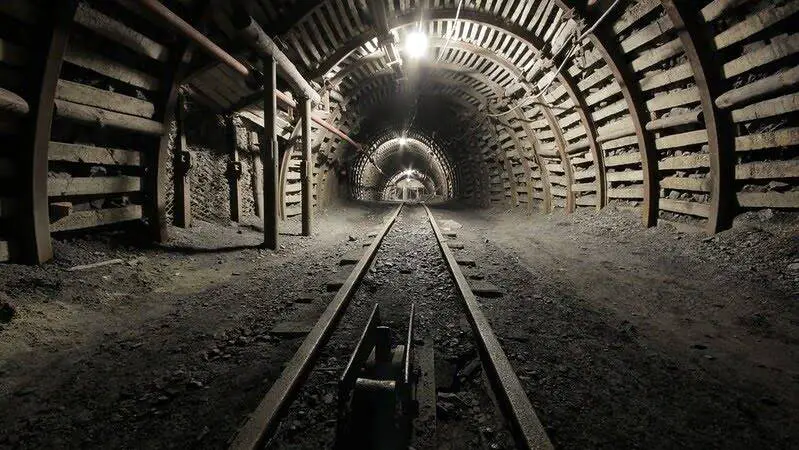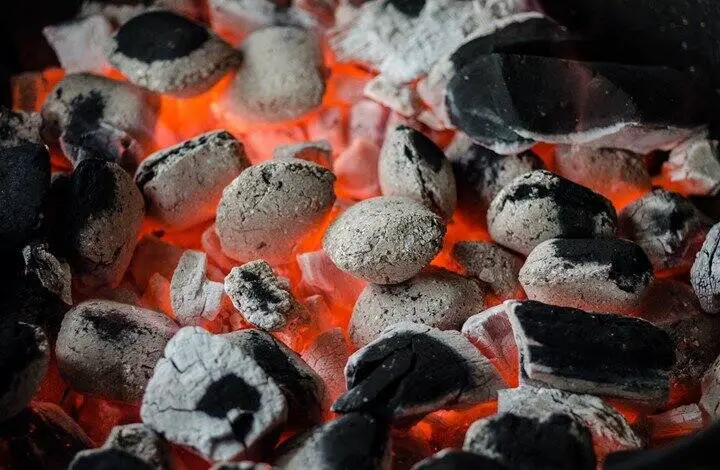It’s not a hidden fact that the excessive use of Coal as a primary source of electricity generation is devastatingly destroying mother nature. However, we do have some advantages of using coal over other sources of primary energy.
Just to make things clear, I am not endorsing the use of fossil fuels such as coal or petroleum products here. What I mean is that unless or until we have some substantial amount of alternative resources to meet the need of the world’s energy consumption, we are bound to use fossil fuel products like coal and petroleum.
In fact, in the recently concluded Glasgow Climate Pact, the world leaders were advocating for the phasing down of excessive utilization of coal, not the phasing out. They know that we do not live in an imaginary world where we can achieve whatever we wanna achieve within the blink of a second. In the real world, everything takes time.
Therefore, as a result, until or unless we have the necessary infrastructure as well as resources, we are bound to use non-renewable resources like coal energy. Keeping that in mind, today I am gonna tell you the top 6 exclusive advantages of using coal energy that we need to take note of…!!!
Advantages of Coal Energy Source
If you think you can’t relate to the benefits of using coal as an energy source, well, here is your chance to think again. Let’s dive right in…!!!
- Huge Global Reserves
- Cheap and Affordable
- Coal is Reliable
- Large Number of Applications
- Coal is Clean with some Exceptions
- Create Jobs and Uplift Economy
Huge Global Reserves

One of the biggest benefits of using coal energy is its huge global reserves. Even though strictly classified as non-renewable, they are available almost everywhere. The United States of America (22%) has the largest coal reserves in the world followed by Russia (15%), Australia (14%), China (14%), and India (10%).
As per worldometer, there are 1.13 trillion short tons of proven coal reserves in the world as of 2016. Meaning, these proven coal reserves will easily take us through another 130 to 135 years.
On the other hand, as per eia.gov, there are 1.16 trillion short tons of proven coal reserves in the world as of December 31, 2020. Meaning, total world-proven reserves will easily take us through another 150 to 170 years, of course, at the current consumption levels excluding unproven reserves.
Both of the above data imply that we have plenty of them out here. You can see that within 4 years, the proven coal reserves increased by 3 billion short tons. My point is that we humans don’t know that in actuality, how much fossil fuel is left on earth.
I mean in every few weeks or a month, we hear that some country has found new crude oil or natural gas reserve, or, in our case, a new so-called PROVEN COAL RESERVE. Is Coal non-renewable? Now, I am in doubt.
Editor’s Choice:
Cheap and Affordable

For electricity generation, Coal is by far the cheapest among all the non-renewable resources. By cheapest I mean the fuel cost for electricity generated per kWh is lowest for a coal power plant only lagging behind the gas and nuclear power plant.
Being a domestic source of energy, it also helps us to reduce our dependence on foreign oil. I mean who doesn’t know how the price of crude oil fluctuates in the international market? On the other hand, the price of coal remains non-volatile most of the time.
To sum up, I would say that not only one of the biggest benefits of using coal as an energy source is that it is the cheapest of all. It also helps in the growth of the national economy by reducing our dependence on foreign oil.
Editor’s Choice:
- Renewable Resources: Definition, Examples, Advantages, Disadvantages
- Nonrenewable Resources: Definition, Examples, Advantages, Disadvantages
- Difference Between Renewable and Nonrenewable Energy Resources
- Applications of Renewable Resources in Daily Life – Top 6
- Examples of Non-renewable Resources (Uses, Pros & Cons)
Coal is Reliable

The next one in my list of top 6 advantages of using coal as an energy source is its Reliability. Unlike solar or wind power, a coal power plant does not rely on external sources like the intensity of sunlight or the speed of the wind.
For example, the sun is an external source of energy for a solar power plant that does not shine during nighttime. Therefore, the output energy of a solar power plant is directly halved. That is not the case with a coal power plant.
It doesn’t matter whether it’s day or night time, a coal power plant will produce energy at any time, all year round. Similarly, unlike hydropower plants, there is no change in the output of a coal power plant regardless of any kind of weather condition.
For example, during the winter season or at the time of snowfall, the output of a hydropower plant is severely affected. But that is the case with a coal power plant. It doesn’t matter whether is a rainy day, or a winter season, or snowfall, the output of coal energy will remain unaffected.
This is why most of the automobile or manufacturing sectors heavily rely on a coal power plant rather than using any other fossil fuel or renewable energy power plant.
Large Number of Applications

No wonder, a coal power plant is by far the largest contributor to the world’s electricity generation. As per the available data, it accounts for approximately 37 to 38% of the world’s electricity needs. But, what do you think? In today’s world, energy of coal is only used for electricity generation. The answer is NO.
Coal is versatile and therefore, one of the most important sources of energy for industrial applications like cement, aluminum, or even hydrogen production. Coal-derived liquid fuels are nowadays used in the transportation sector too. According to the World Coal Association, approximately 200 kg of coal is needed to produce 1 tonne of cement.
Similarly, 60% of the energy used to produce aluminum comes from coal. 20% of hydrogen production comes from coal-to-gas processes. Speaking of transportation, Coal to Liquid (CTL) Plants produce more than 160,000 barrels of liquid fuel per day from coal.
Apart from the above-mentioned one, the other major uses of coal energy are in the paper, soap making, aspirins, dyes, plastics, fibers, glass, textile, chemical industries, and many more.
Coal is Clean with some Exceptions

Again, I am not advocating the use of coal. But, I have some great factual points to make. There is a misconception about coal that all type of coal causes global warming. My point is that which type of coal is most harmful should also be taken into consideration. By definition, there are four types of coal. These are Lignite, Sub-bituminous, Bituminous, and Anthracite.
Lignite is by far the lowest rank of coal and also has the lowest energy as well as the highest moisture content. On the other hand, Anthracite is by far the highest rank of coal and also the highest energy as well as the lowest moisture content. Sub-bituminous, Bituminous comes in between.
Lignite typically contains somewhere around 25-35% carbon content. Similarly, Sub-bituminous, Bituminous, and Anthracite has 35-45%, 45-86%, and, 86-97% of carbon content. The highest the rank of coal, the highest will be carbon content, the highest will be energy content, therefore, the lowest will be greenhouse gas emission.
In short, the rank of coal is inversely proportional to greenhouse gas emissions. To conclude, Anthracite is the highest-ranked coal hence the cleanest among all. What I want to say is that while phasing down the use of coal, we should at first eliminate the use of Lignite followed by Sub-bituminous, Bituminous, and finally Anthracite.
Create Jobs and Uplift Economy

Last but not least one in my list of top 6 advantages of using coal as an energy source is that it not only creates jobs. It also helps in the upliftment of the rural as well as the national economy. In actuality, a coal power plant creates more jobs in the informal sector like mining rather than in the formal sector.
For example, you need a highly skilled as well as educated person to mine uranium for a nuclear power plant. But that is not the case with coal mining. Anyone with a little knowledge can have a decent job as a coal miner.
Apart from being a coal miner, some of the notable sectors include Department Head Power Plant, Thermal Power Plant Layout Design Engineer, Material Manager, Assistant Officier Power Plant Operation, Control Room Operator, Mechanical and Electrical Engineer Job in Thermal Power Plant, Senior Engineer Fire Protection, Safety Officier, Fire Alarm Design Engineer, SteelAnalyst, Safety Supervisor, and, many more.
Some other Advantages of Coal Energy
Apart from the above-mentioned benefits or advantages, I am also mentioning some of a few here.
- Coal is not an intermittent energy source
- An inexpensive source of energy
- Compatible with other energy resources
- Easy to store
- Controllable output
- Easy to transport
- Consumable by-products
- Minimal waste
- Very low capital investment
- Low running cost
- Easy burning process
- Easy to manage
- Very high load factor
- Provides stability in Energy Sector, etc.
That’s it for this post. If you like this article, share it if you like, like it if you share it. You can also find us on Mix, Twitter, Pinterest, and Facebook. Hey man, If you have come this far, do give us feedback in the comment section. It would make my day. You can also make a donation. Your donations will help us to run our website and serve you BETTER. Cheers!!!
